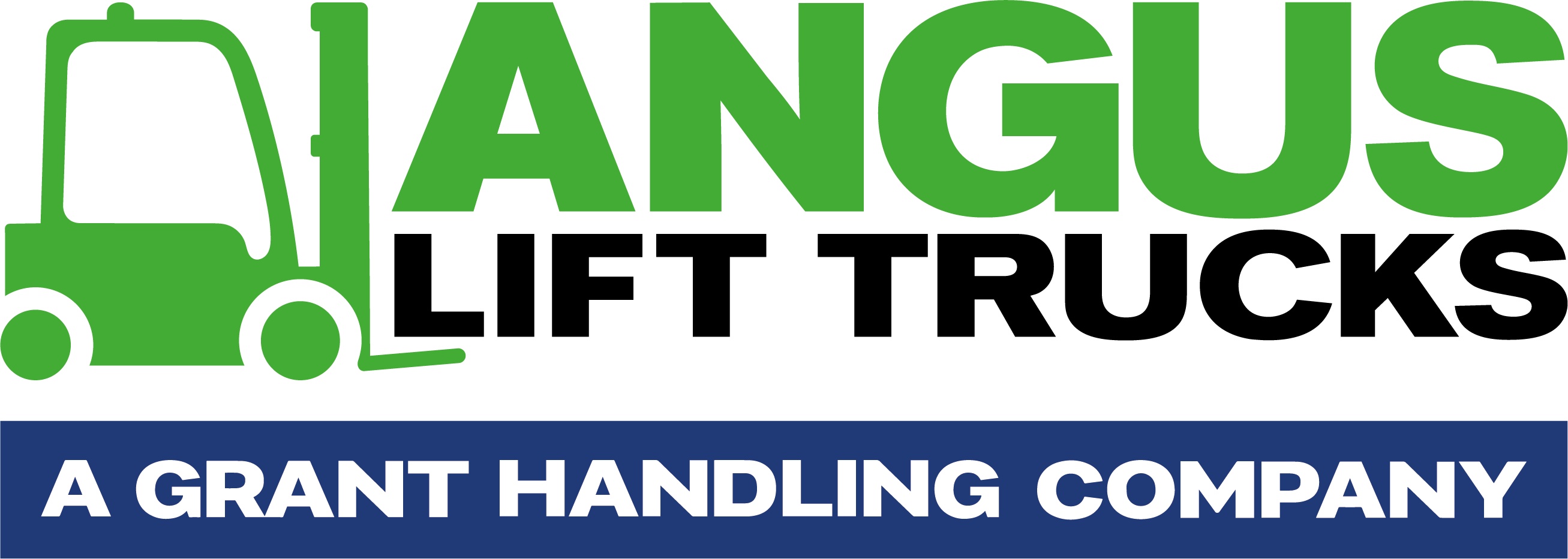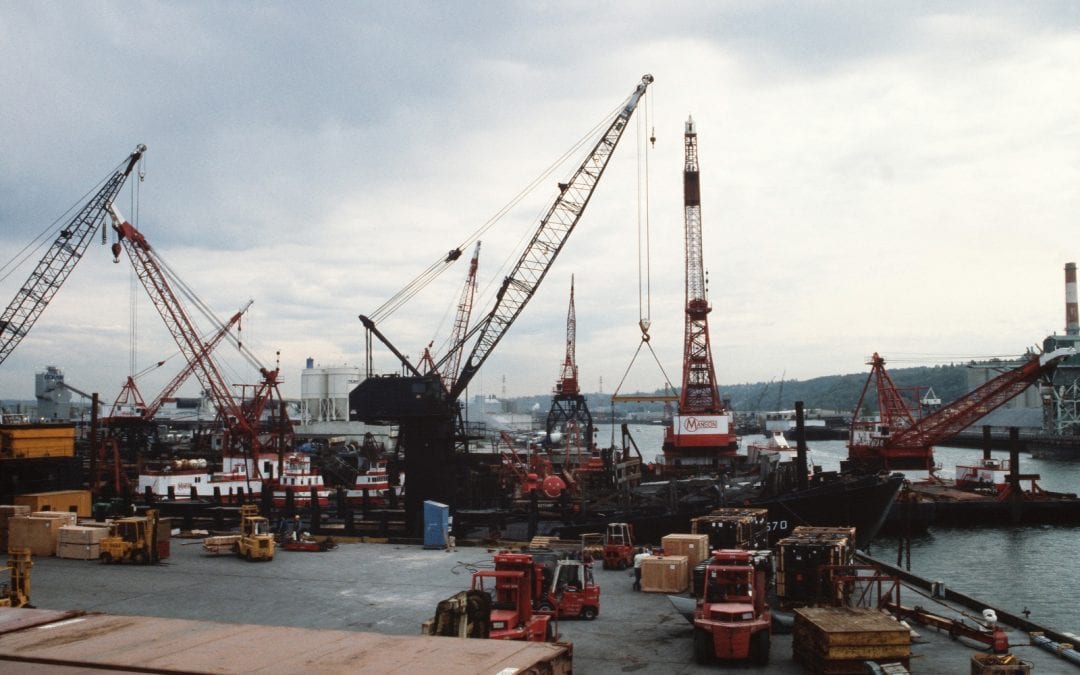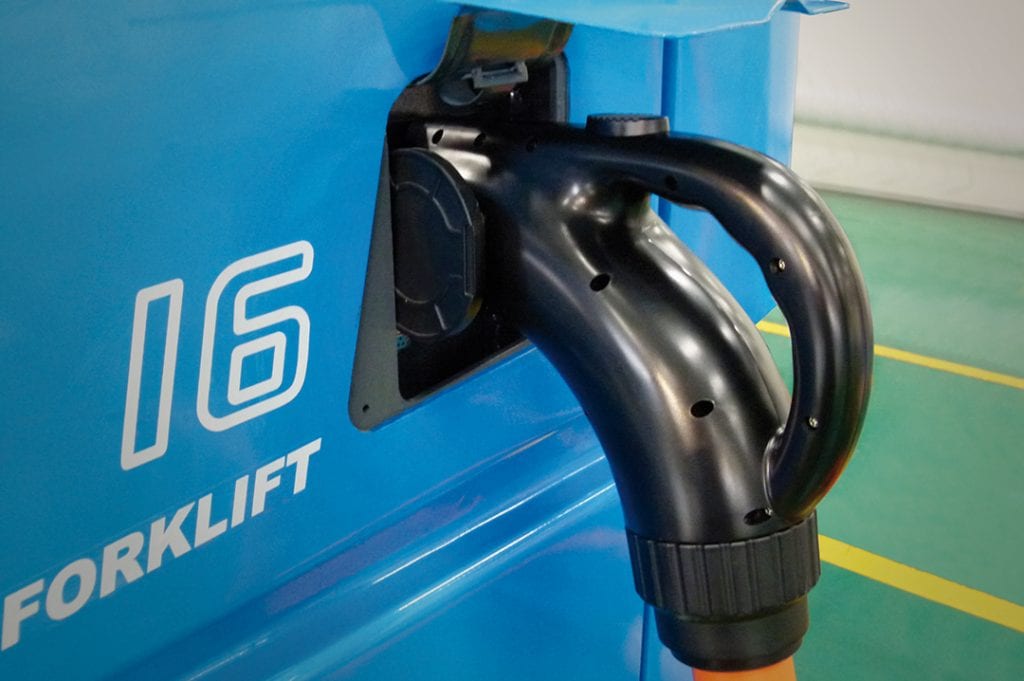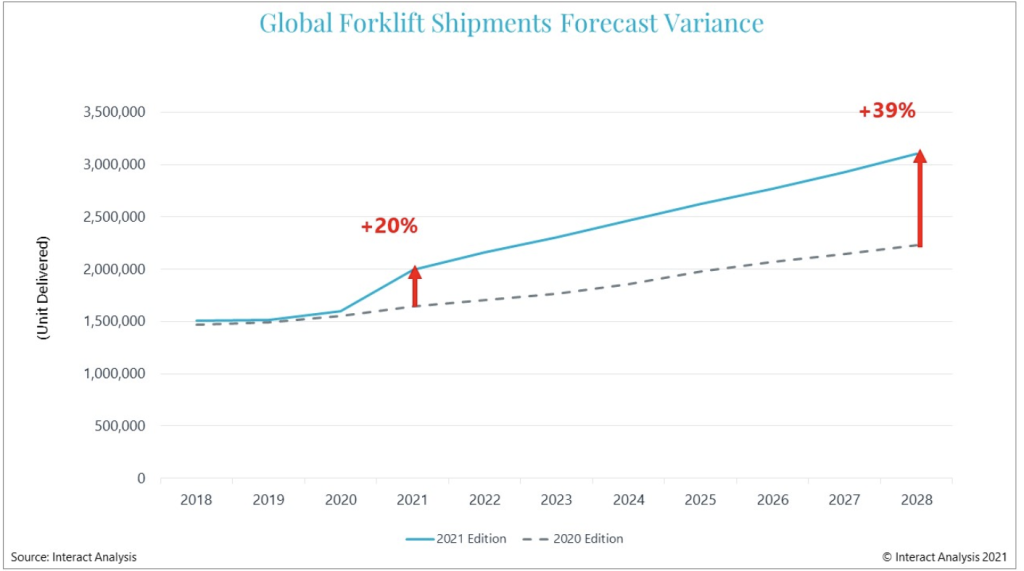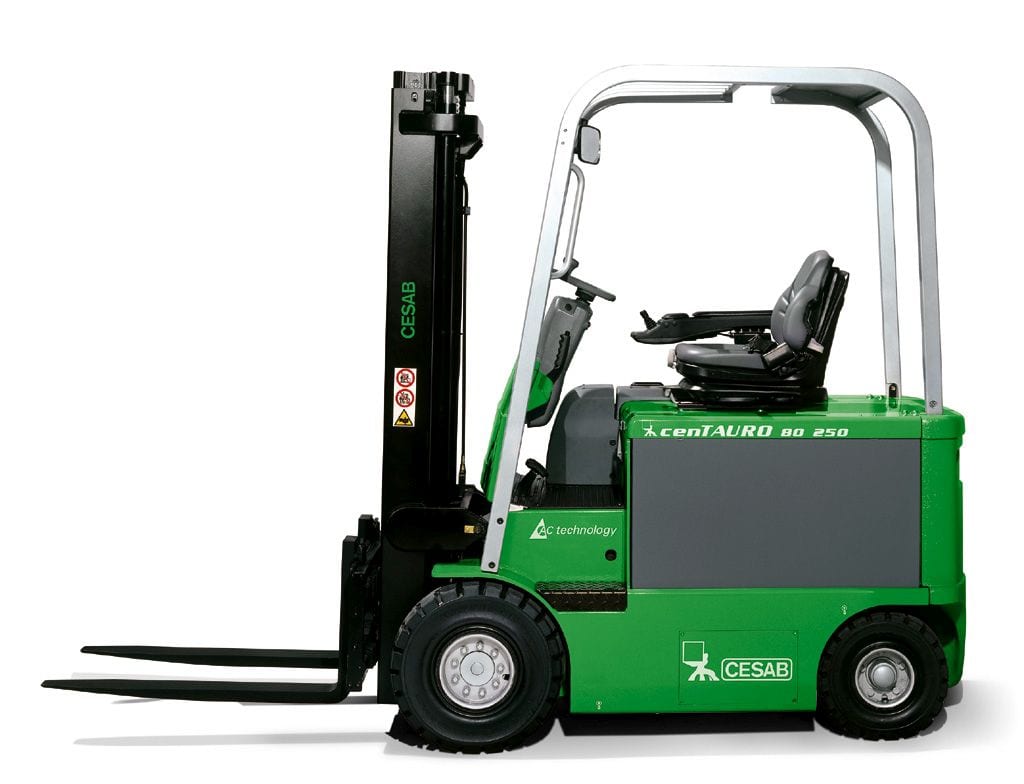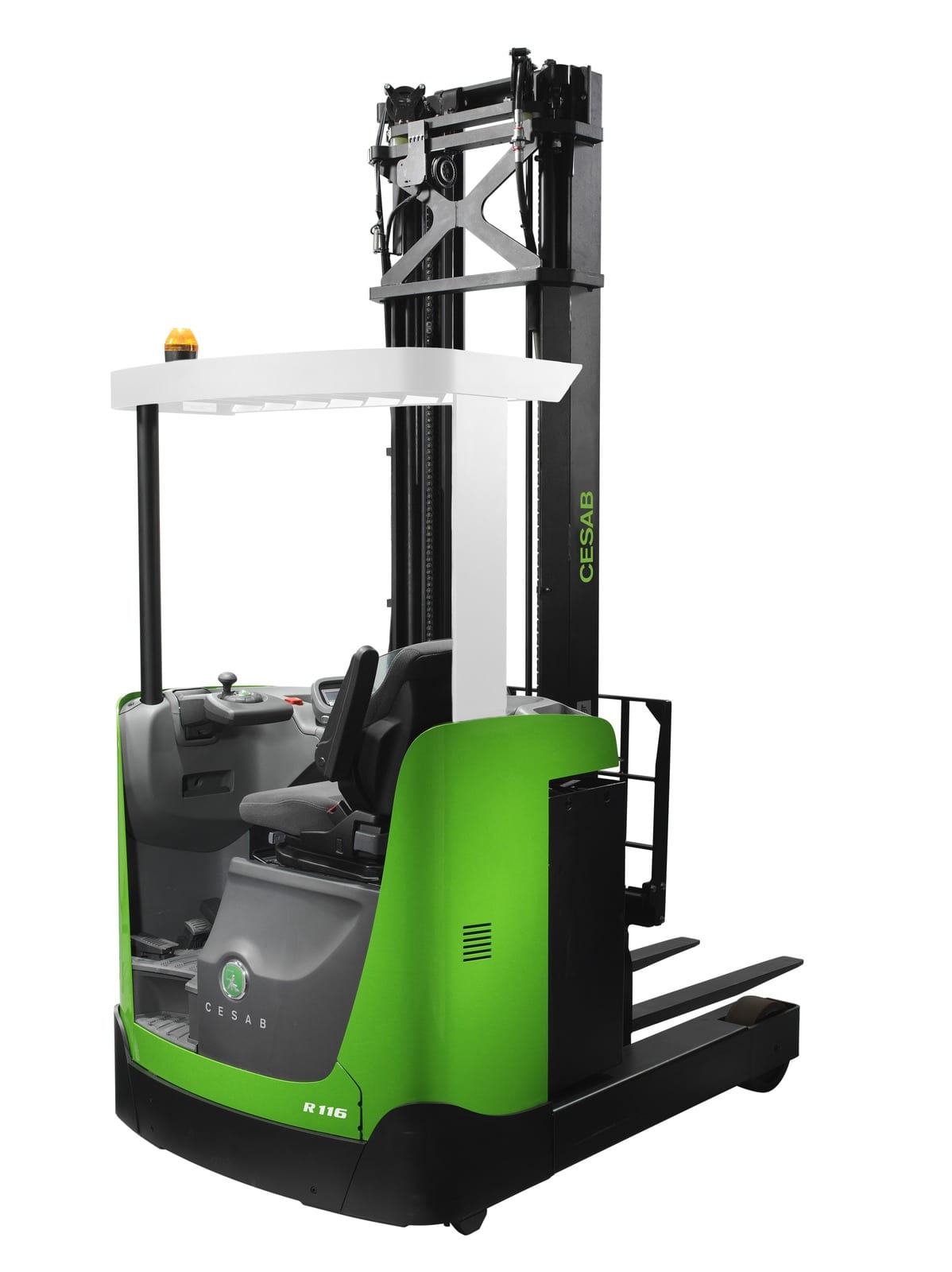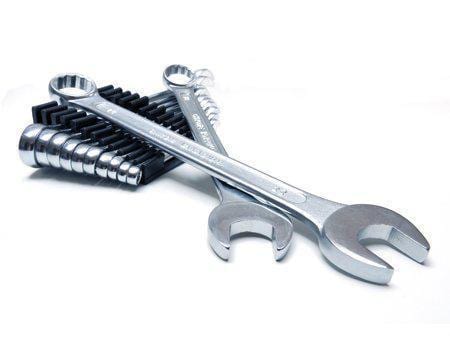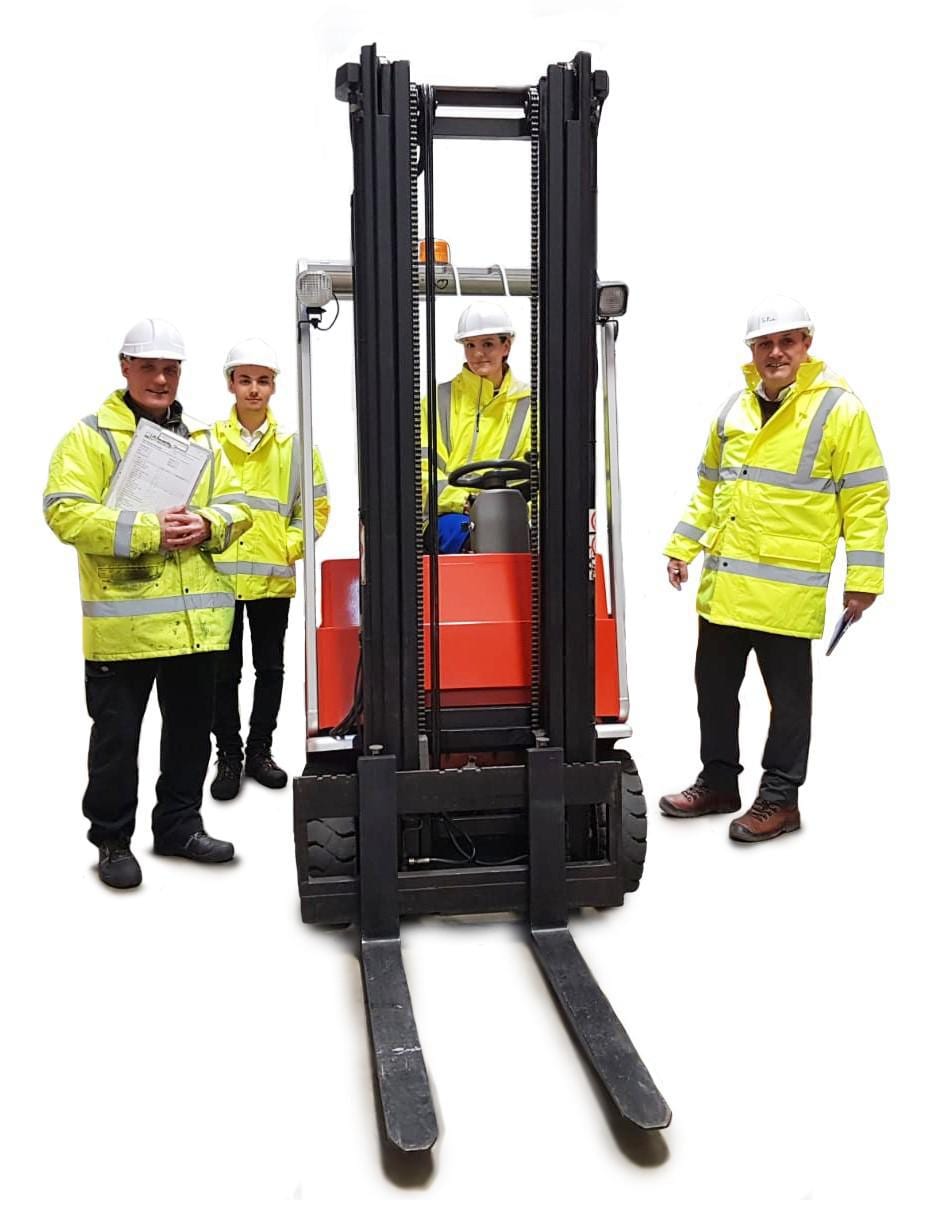Forklifts have been a mainstay in the manufacturing, warehousing, construction, and distribution industry for over 100 years. They’ve lifted palettes full of every good or product imaginable, but they’re not done yet. Let’s explore the forklift trends that will shape this dynamic and exciting industry over the next few years.
1. Infrastructure Investment Is Increasing Forklift Demand
Governments are investing in infrastructure around the world, especially in growing economies. This investment is driving the demand for heavy-duty forklifts that can manage bulky and heavy loads. Construction companies need forklifts to manage heavy precast concrete and other bulk materials.
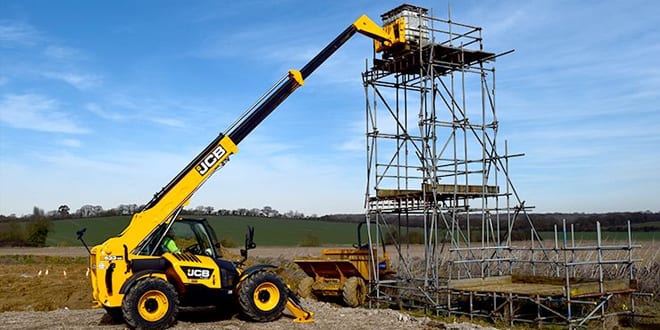
Along with forklifts helping with the demand for new infrastructure, they are also leading their own need for infrastructure. As companies want to add more electric forklifts to their inventory, companies need to upgrade their electric infrastructure. They need charging stations that can meet the 10- to 30-amp demand for each truck.
They also need backup power if communities have power outages. Many companies already have backup power for computers and other tech devices, but they need more to keep their forklifts both running and servicing.
2. Increased Demand in Warehousing and Distribution Industries
Globally, warehousing and distribution companies need forklifts to keep up with their customers’ demand for moving more goods.
Forrester predicts that the B2B eCommerce industry will be valued at a stunning $2.3 trillion in 2024, and warehouse and distribution industries will need to meet this growing demand with more space and equipment.
Logistic companies need more narrow-aisle forklifts, pallet stackers, and counterbalance forklifts to manage the demand for more inventory. They need forklifts to fit into tight spaces so they can reach more inventory into tightly packed and highly stacked shelving units. The forklifts need to meet high-performance standards due to growing e-commerce and retail needs. And of course, there is a growing demand for training new forklift operators faster than ever.
3. Increased Demand for Forklifts Powered by Sustainable Energy
Hiring or buying electric forklifts is an economical alternative to gas-powered forklifts. They are quiet, safe, clean, and easy to operate. Electric forklifts can do the same work that gas-powered forklifts can do, but they do it without emissions.
These eco-friendly forklifts have advanced technologies that have improved their performance, thus increasing demand from a range of industries.
The demand for electric forklifts is increasing as local governments are pushing industries to use innovative technologies. The government push is increasing the market share for all-electric forklifts, and forecasts indicate that electric forklifts are the fastest-growing segment.
Electric forklifts can do everything a forklift with a combustion engine can do. They can accelerate, control speed on ramps, brake, and lift just as well or better than traditional forklifts. Because of the AC motors, electric forklifts can accelerate faster, and the newest counterbalanced electric forklifts can outperform the internal combustion models.
Another trend in electric forklifts is the reliance on lithium-ion batteries over lead-acid batteries. Li-ion batteries are commonly used in Tesla cars and other EVs because they charge quicker and weigh less than their lead-acid counterparts.
4. Demand Is Increasing for Autonomous Forklifts
Along with the increasing demand for electric forklifts, customers also want autonomous forklifts. As more logistics and materials companies adopt artificial intelligence, they want machines that can connect to their computers and manage autonomous demands. Autonomous forklifts need to provide real-time responsiveness to move goods efficiently.
When companies use AI and autonomous forklifts, their human employees can do other critical work. Autonomous forklifts technically replace the skilled workforce as they move goods around the floor without needing an employee inside each truck. Companies that choose autonomous forklifts can spend their human resources budget elsewhere, thus increasing productivity and creativity in their companies.
The need for autonomous forklifts also comes from rapid growth in infrastructure in developing countries. These growing countries need more material handling, but they don’t want to put a human in every forklift.
In developed countries, the demand for autonomous forklifts comes from end-use industries, especially logistics and transportation companies.
Autonomous forklifts fill the need to increase operational efficiency by reducing staffing problems. The machines can run 24/7 without needing time off for injuries, breaks, and sleep. Automated forklifts are less likely to damage products, and they can move items faster without errors.
The newest automated lift trucks are driving a need for computer chips, sensors, and cameras so they can efficiently do their jobs. They also need software that integrates with pre-existing telematics and warehouse management apps. The software also needs to provide immediate information to managers when technology fails or needs upgrades.
5. Growing Need for Forklifts in China and Other Asian Markets
China and other Asian markets need more forklifts. Companies and governments in China, Asia, and European markets need forklifts to meet the demand from the e-commerce and retail sectors. According to market forecasters, the demand in India is expected to be around 13% CAGR through 2027.
The Indian market needs more forklifts to move materials in the growing warehouse industry. India has a rapidly developing logistic sector, so the country needs more high-performance forklifts. The potential investment in the Indian logistic industries could reach GBP 360 billion by 2025.
China needs more forklifts to manage its massive manufacturing industry, and the country also needs parts and supplies to support its forklift manufacturing companies. The situation is similar in the United States, where manufacturing and the need for modern forklift trucks continue to grow.
The country uses more class III and class V trucks than other types. However, as more companies turn to automated and electric forklifts, Chinese companies will need more small-class lift trucks.
Despite the Asian market needing a significant investment in new forklifts, the European market is also growing and increasing its demand for forklifts – especially those with electric motors.
6. Big data is coming to the forklift industry
Data analytics are helping warehouse and manufacturing teams achieve incredible oversight of their business, including their forklifts. One of the biggest fork truck trends will involve data generation and analysis that allows management to monitor usage patterns and find new ways to drive efficiency. These tools will also be used for sophisticated predictive maintenance that will reduce downtime and repair costs.
Tech-related forklift trends like IoT, Telematics, and SMART forklifts will help the industry move towards connected warehouses that allow for real-time tracking that can boost safety, optimize operations, and reduce costs. What’s not to like?
When paired with the other fork truck trends, especially number four on our list, these technologies will result in futuristic forklifts that seemed impossible only a few decades ago. But the real question is whether these futuristic, autonomous forklifts be able to make a cup of tea for you in the breakroom after a tough day?
You may also like
In Conclusion
The biggest trends in forklift use involve using sustainable energy sources and automation. These technologies require manufacturers to change the way they manufacture their lift trucks. What’s more, these innovative forklift trends also require the end-users to change the way their internal infrastructure supports their high-tech and sustainable tools. If you are looking for more information on the different types of forklifts available on sale from Angus Lift Trucks, we serve a wide range of areas in the Midlands, including Leicester, Nottingham, Birmingham, Northampton, Warwick, Derby, West Midlands & East Midlands.
This post is also available in:
Français
Deutsch
Italiano
Português
Español
Български
Hrvatski
Eesti
Latviešu
Lietuvių
Polski
Português
Русский
Slovenčina
Slovenščina
Türkçe
Українська
Albanian
Čeština
Dansk
Nederlands
Ελληνικά
Magyar
Română
